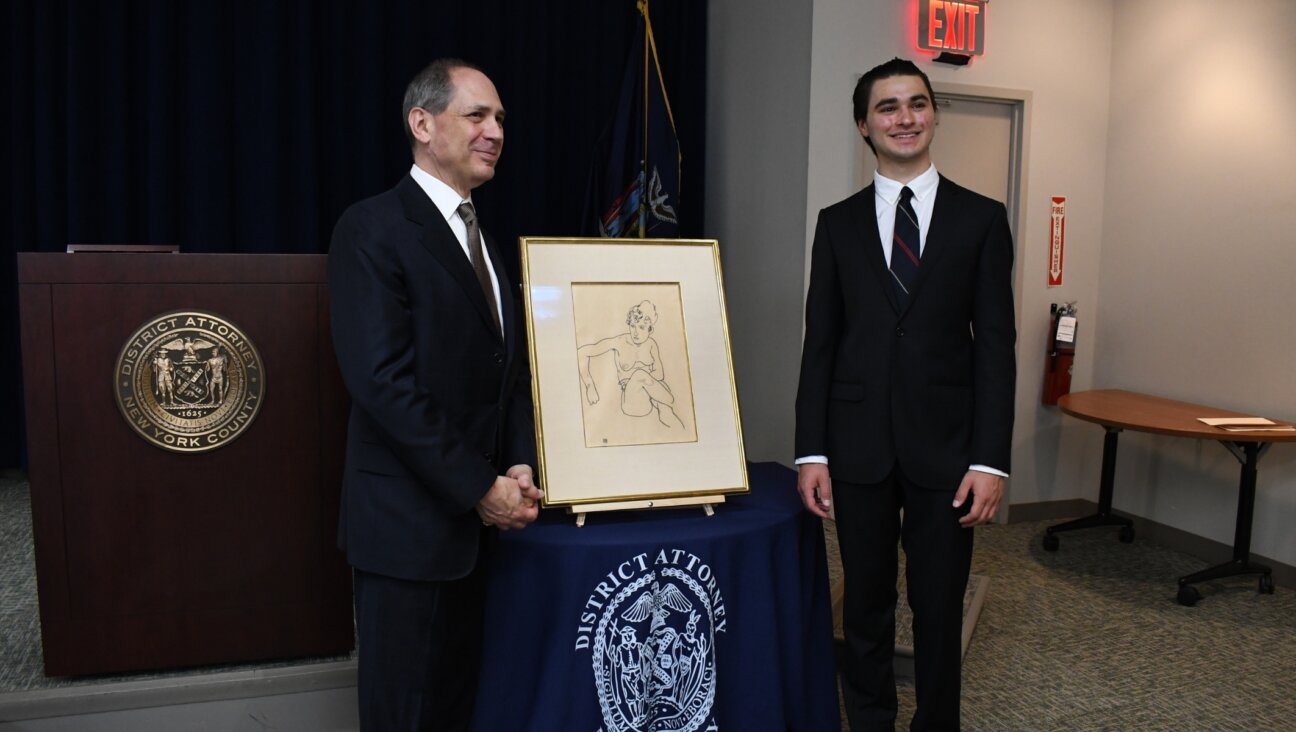In the Circular Ruins of the Aleph
A white room in a white world. The sort of place that set designers use to suggest heaven. Why such a sterile vision is supposed to imply eternal bliss, one may only guess.
Two men wander the cloudy floor in casual conversation. One, Moses, is an imposing figure in flowing robes with the wild hair of a prophet or a rock star. The other, Jorge Luis Borges, is dressed in a three-piece, chalk-stripe suit. His neatly trimmed hair is combed straight back. He could be a banker. His Spanish has the soft, blurred accent of Buenos Aires. They talk the way two writers who no longer worry about agent commissions and remainder tables might talk — that is, a conversation full of unspoken envy, from the lesser to the greater. Though in this case, obviously, they are both very great. Still, there is a hierarchy.
B: I always have admired your skill at ambiguity.
M: That’s what the Delphic Oracle says. But I must say it was never intentional.
B: You’re too modest. Why just yesterday I heard two of your brethren discussing —
M: My brethren seldom discuss.
B: True enough. They were arguing, hammer and tongs, about who wrote the Torah.
M: I beg your pardon. How is that possible? It is an article of faith that I wrote the Torah. As it is written: This entire Torah… is the one given by Moshe… dictated entirely by God.” (Maimonides’s introduction to the Mishnah)
B: Of course. There were a few lines in dispute.
M: Please, none of that J wrote this and E wrote this and XYZ and PDQ and FBI and the rest of that aleph-bet soup.
B: No. They were quite specific. The argument was over the lines that describe your own death, as it is said in Deuteronomy 34:5-6: “So Moses the servant of the Lord died there in the land of Moab, according to the word of the Lord. And he was buried in the valley of the land of Moab over against Beth-peor; and no man knoweth of his sepulcher unto this day.” Reb Yehudah doesn’t see how you could have written that. As he says in the Talmud —
M: Which I also received.
B: He says Joshua wrote those lines after your passing.
M: He does, does he?
B: Absolutely. Reb Shimon, on the other hand, says you wrote every word, though perhaps you wrote those lines “with tears.”
M: I was in no hurry to go, I admit. But arguing with HaShem is usually a losing proposition. Though I didn’t do badly once or twice.
B: Still, the Talmud is unclear. There are sages on both sides. The Chacham Tzvi agrees with Reb Yehudah. How can you write about your own death?
M: Compared with some of the things I did — and in full sight of the children of Israel — that would require only a minor miracle.
B: As Reb Shimon so cogently argued. But Yehudah countered that if you were aware even of your own death from Sinai onward, you deserve an Academy Award for pretending you didn’t know exactly what would happen every step of the way.
M: As it is written: “Who will rid me of this turbulent priest?” (“Becket,” Jean Anouilh)
B: The Vilna Gaon offers a solution. He suggests you took down the letters of all the words on Sinai, but only wrote them down as events unfolded. That means that though you took down every word, Joshua could have unscrambled the puzzle at your passing.
M: Ingenious.
B: Quite. Unfortunately that begs another question over which Reb Yochanan still argues with his companion, Resh Lakish. Reb Yochanon insists that you received the Torah one scroll at a time. Resh Lakish says you got it all in one fell swoop. And, as if that weren’t confusing enough, Rashi pipes up and tells Lakish that Lakish doesn’t mean exactly that.
M: What can I say? My children like to thrash out things. An organic democracy, if you will.
B: So which is it? Did you write it all down at once? Did you receive it scroll by scroll? Was it in verses? Or was it in letters like Latin, with no punctuation or spaces between words?
M: You know, there’s a question I’ve been meaning to ask you. You remember when HaShem took me up on Mount Pisgah and showed me the future of the Children of Israel to the End of Days?
B: Of course.
M: Do you think that was a prophetic revelation or that thing you wrote about, the only place on earth where all places are — seen from every angle, each standing clear, without any confusion or blending?
B: An Aleph?
M: Yes.
B: I don’t know.
M: Neither do I.
Moses wanders off, disappearing among the clouds.
B: Hey, wait. You didn’t answer my questions.
M: I’m like my children. I like arguments, too.
Jeffrey Fiskin is a writer who lives in Los Angeles.
A message from our editor-in-chief Jodi Rudoren

We're building on 127 years of independent journalism to help you develop deeper connections to what it means to be Jewish today.
With so much at stake for the Jewish people right now — war, rising antisemitism, a high-stakes U.S. presidential election — American Jews depend on the Forward's perspective, integrity and courage.
— Jodi Rudoren, Editor-in-Chief






















